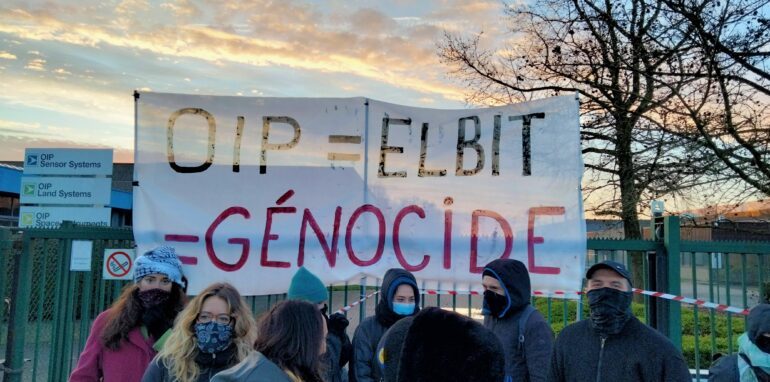Approaching the commons
The common is under threat. Both Nature (the ecosystem we share) and Culture (language, expressions, cultural tradition, art, cultural heritage, and media we use and share without ownership) are under severe pressure. The impending appropriation by states and multinationals of the North Pole is allegorical for the vulnerability of the ‘natural common’ (as Negri and Hardt call it in Commonwealth). The patenting of seeds by Monsanto and other multinationals is also an allegorical case: it constitutes the appropriation and privatisation of what was shared by farmers for 10.000 years. The battle over the privatisation of knowledge (and research) in the knowledge economy is proving that also the ‘artificial common’ (to stay in Negri and Hardt ‘s terminology) is endangered. Even language, the ultimate example of the cultural commons or ‘artificial common’ (in Negri’s somewhat awkward terminology), is not safe: we have seen attempts to take copyright on words, and of course states and corporations have tried to control and appropriate language in all sorts of ways. (Think of an expression like: ‘Google it!’)
The common is under threat – we become aware of the common. But we have forgotten what it is. Or we know what it is, but it somehow remains alien, it is not a obvious category of our discourse. From newspapers to the history of philosophy and theory: discourse on the common is marginal. If we make exception of the recent revival of the common, but, even if it has and, quite rightly, become a buzzword lately, in sociological and in media terms even that would still have to be considered as a marginal phenomenon – something for alternative people, ecologists and leftist thinkers like Agamben, Zizek, Badiou, and of course Negri and Hardt. The absence of the idea of the common, both our stuttering and our swooning when we use the word is therefore symptomatic. If we want to reactivate the common, we will have to start from its absence, its forsakenness, its oblivion, its abolition.
Especially in relation to space, we are used to think in terms of public versus private: a space is either public or private. If we find a space that does not fit this dichotomy, we call it semi-public or semi- private. But the common is a third category. But what is this forgotten third category, that we are rediscovering after it had almost completely been forgotten? As we have forgotten the common, forgotten what it is, and in order to approach the commons in spatial terms, the ‘spatial or territorial commons’ it is maybe wise to start with some basics, some common places – in search of the link between common and place. If we look for the most common place definition of the common it could sound like this: The common is what is neither public (state owned) nor private.
But what does the word common actually mean, where does it come from? According to the Online Etymology Dictionary the adjective ‘common’ was introduced in English around 1300, and means “belonging to all, general”. It is derived form the Old French comun “common, general, free, open, public” (that it dated around the 9th century, in Modern French commun). It comes from Latin communis “in common, public, shared by all or many; general, not specific; familiar, not pretentious,” But, it comes originally from the Proto Indo-European (PIE) word *ko-moin-i- “held in common,” compound adjective formed from *ko- “together” + *moi-n-, suffixed form of root *mei- “change, exchange”, hence it means literally “shared by all”.
‘The second element of the compound also’, still according to the Online Etymology dictionary, ‘is the source of Latin munia “duties, public duties, functions,” those related to munia “office.” Perhaps reinforced in Old French by the Germanic form of PIE *ko-moin-i- (cf. Old English gemæne “common, public, general, universal;” corresponding in English to mean, which came to French via Frankish’. And then without further ado, the entry concludes: “Used disparagingly of women and criminals since c.1300….” The linguistic Aha-Erlebnis of this short entry is that common (in Latin languages and in English) and ‘gemein’/gemeen/mean (in Germanic languages) have the same root and are in fact a deformation of the same ‘urword’ (Komoini) – so the French ‘commune’ and the German Gemeinde (or Dutch gemeente) are not only equivalent (for village, or community) but in fact the same word, differently (de)formed. Besides we discover here that the common is always also the mean, the general, not only what is shared by all, but also what is despised as low and vulgar. The combination with duty (munia) points to a political task: taking up tasks in and for the community, but it is too early to go in to that.
The noun common(s) the dictionary dates as late 15th century, “land held in common”. That is of course the quintessence of what we are looking for: the spatial commons. In Dutch the common in its stark meaning of ‘land held in common’ would be ‘meent’, but apart from the London commons, a street name in Rotterdam, and apparently some places in and around Bruges, and some other patches here and there maybe, very little is left of it. Another proof that the common in spatial terms has been almost totally appropriated, privatised or nationalized, often destroyed as common. Beside this the dictionary signals: ‘Commons “the third estate of the English people as represented in Parliament,” is from late 14c. The Latin communis also served as a noun meaning “common property, commonwealth.’ That is the concept of commons now used by the defenders of the commons. This dictionary entry seems a good starting point for our common places, that might prove to be paradoxical platitudes.
The enclosure of the commons
The first common place, the common places of common places, so to speak, would be that Nature is common. Indeed, Nature is common by essence. It is the ultimate common. It is that what we share: the cosmos, the blue planet. Not only share with all other humans, but with all living and inanimate creatures, organic or inorganic matter. This once vast and overwhelming wholeness in which the human species one day appeared in prehistory is now a fragile and awfully limited ecosystem. Now, it is precisely this species that is so predominant and so all encompassing that it has given its name to a new geological era: the Anthropocene. It is in the Anthropocene that the common is at the same time precious in a new way and under stress, squandered and appropriated.
All this leads us to another platitude: the commons, in spatial or territorial terms, like the famous, paradigmatic London commons, are leftovers (of premodern law, like the Magna Carta and the charter of the forests, of nomadic cultures, of even, the state of nature?). We can think of Rousseau’s proto-anthropology of the ‘good savage’(le bon savage): it is when somebody was audacious to fence off a patch of land, and say ‘this is mine’, and found people stupid enough to believe him, that private property, and after that regulated society and inequality started. Indeed only for what anthropology has called the ‘nature peoples’ and for nomads nature is truly common. For them it is common by nature as it were. That is maybe the real reason behind animism: it expresses this deep awareness in the most perfect way possible, both children and rational philosophers, even scientists can understand this (sometimes): the mystical ‘given-ness’ of it all. Given by nobody to everybody. Given to nobody by this ultimate body, mother earth, the cosmos. Deus sive natura. Pantheism was a more modern way to put it. It is this ‘given-ness’, this gift that is away from us, or it is a respect or gratefulness that we have lost. In nomadic culture you use nature, but you don’t own it. Life is a (sacred) give and take, a fragile process that requires restraint and respect (for land, trees, animals, and especially for the balance, the wholeness of it all). The shepherds are respectful of the land. The hunter is grateful and respectful to his prey.
Agriculture needs land. Sedentary cultures cannot move their turf (or only to expand or colonize). With the disappearance of nomadic culture (let’s not think of it as a natural process: think wars, colonization, genocide), the commons shrink, it becomes more and more a leftover zone, often arid or at least non arable land. From 1500 onwards the common in Europe becomes a reserve, like later the reserves for the nomadic native Americans in the US and Canada. This idea of the common as ‘protected’ and imprisoned in reserves is something to stress. Of course the oceans are still common, like the air, but the North Pole is as we write under threat of exploitation, as states and multinationals want to appropriate and exploit it. The retreat of the icecaps is leaving the North Pole naked and vulnerable to rape, so to speak.
The commons is weak, is the weakest. Seeds have, apparently, no defense. Neither has water. Nor has the air. (Even language is not safe.) Without property, it is not easy to defend a territory, a space, place, an entity, a species. Wild nature is everybody’s, so corporations can ‘enclose’ it, appropriate it (as they do with ‘wild seeds’). In a sense only a world body politic, a radically reformed and strengthened UN could outlaw the privatisation of seeds, like only a world body, like the UN, could really defend the Amazon forest, the North Pole, the ecosystem.
The common is primordial, archaic. Modernity opens up with the closure of the commons, as documented by Thomas Morus in the first part of his book Utopia. From the 16th century the (spatial) commons (as ‘land held in common’) virtually disappear in Europe. We could call it the ‘Moment Morus’. Indeed it is often overlooked that the first part of Utopia (over half of the book) is a tirade against the enclosure of the commons by the ruling classes and landed gentry, that forced large swats of the populace (the ‘commmoners’) into poverty, vagabondage and theft. Utopia is written against the enclosures, and I think this seemingly accidental or even whimsical link cannot be underestimated. It feels like a hint. But what does it mean? What does this omen want to tell us? A premonition of causality? Is Utopia the defense of the common? Yes. Utopia was a response to this dystopia Morus could see happening before his eyes. Is the common a utopia? Also affirmative. It is because he was looking for a counterimage, an alternative, that Morus was tempted to conceive an undiscovered Island that was an expanded community of mixed cloisters, with common meals, common dwelling, uniform clothes, strict day order, and no private property. The cloister, this most medieval of heterotopias, became the modern paradigm of utopia (one could say all utopias have this ‘claustrophilic’ tendency, which explain their totalitarian tendency).
The fact that the book was published at the very beginning of the 16 century (1513) is telling: both Braudel and Wallerstein put forward 1500 as the beginning of capitalism. The rise of capitalism has been marked in an almost allegorical, but also very real way (as documented by Marx in his chapter 24 of The Capital and by Linebaugh in his Magna Carta Manifesto) by the enclosure of the common, one can say that over 5 centuries capitalism has erased the common, both its reality and even the very idea of it, especially in spatial terms, we do not think anymore in terms of the commons. A massive appropriation of the common has happened from two sides: the rise of capitalism has privatised the common and the rise of the (modern) state has nationalized the common: all not privately owned land is almost by definition state-owned. So not only capitalism erased the common, but also communism: everything was nationalized. So both capitalism and communism destroy or annihilate, abolish the category of the common (capitalism by privatisation, communism by nationalisation). Both Nature and Culture are destroyed by totalitarianism, and Capitalism in its totalising phase (neoliberalism) has pretty much the same result.
Both tend to destroy in their own (opposite) way the equilibrium of the three spheres: the public sphere (politics); the private sphere (economy), the cultural sphere (what we have called the heterotopian sphere). In capitalism everything is eaten up by economy: nature, culture, privateness, politics… All is subjected to a ruthless commodification and economisation, eaten away by a metastasis of economy. In communism (or state socialism, as Negri calls it) or totalitarianism the same happens by a metastasis of politics. Nature is ruthlessly appropriated, the private sphere is abolished, economy is subjected to political plans and Culture is ‘purged’.
In sedentary modern cultures the common is a utopia: not only an illusion, but also a nonplace. Think of the commons in London, touchingly absurd cut outs, poetic nothingness, almost total absence: not even a park, just a green, for nobody, for everybody. For everybody and therefore for nobody. This could well be the best definition of the common: the common is that what belongs to nobody and therefore to everybody, or, what belongs to everybody and therefore to nobody. This is a simple paradox that spells the fragility, the ungraspable, enigmatic character of the common well. The commons is mysterious in a sense… (like language).
The cultural common: the common as potentiality
What can the cultural common teach us for our investigation on the spatial commons? Can Language help us? The most important lesson we can learn from language concerning the common is probably this: we use it but never own it, it is an always temporary appropriation of the common: when I speak I use the language that is not mine, to say or write words that become mine.
How to find a spatial equivalent for language. Air? Maybe: air is spatial but not territorial. It is the only element we cannot appropriate, domesticate, privatise (or nationalize). O yes of course, we have tamed the skies. We have national airspaces, but not the air in it. Of course even that is not quite true since the Kyoto agreements: clean air is translated into juridical and economic quantities, so countries can compensate their pollution by sponsoring clean air elsewhere. But if we muse on: is the air and language linked? A clear hint: flatus voci: the commons is an empty word, like the empty space it tries to name. Everything is common, Nothing is common. The common is almost nothing that could become everything. That makes it so precious. Let’s walk again over Clapham Common: it is an empty space in London, because it is for everybody, it is for nobody. Like language in a sense. The common is sheer but also mere potentiality. Here language is again a potent paradigm (as the work of Agamben has shown us).
What can the social common teach us? Is the Polis the common? Here we get in trouble before we even start speaking. The common is not the body politic. It is humans as communities, the community is the common, the common is community. It is this communication and this communion that makes up the social common. In search of common ground I asked, while we were reading Commonwealth (Negri and Hardt) with international students, that people explain us the word common in their respective languages, some Chinese students gave us a revelation: the ideogram for common looks like something of two separated hands eating from one bowl ( ?). This Universal symbol opened up a transcultural universality of communion, the sharing of food as the ultimate basic gesture of community and communication.
One could go as far as speaking about social animism in this respect. The hypothesis (of Durkheim) that all religion is the forgotten self adoration of the communes, of the community, is and remains extremely beautiful and inspiring, beyond the positivist leanings. Not necessarily in opposition to them. The common is the body without the politic, it is the ‘body natural’ of the ‘body politic’, it is not mechanical, not an artificial body, a machine man (Hobbes’s baroque metaphor). The community always underlies the institution (the Polis, the political, the public), there is always community before the polis, before the institution, and besides it, and also after it. It is the prepolitical or ‘zoöpolitical’ social body: mother and child, family, kinship, the clan, the village, the circle of friends.
It is this community, this communalism of the commune, that has been haunting all thinkers looking for an alternative to capitalism, one of the latest attempts is Agamben ‘senchanting book on poverty (De la très haute pauvreté), to show how in the medieval orders, notably in the Franciscan order, there was a radical attempt to think of use without and outside of property. The question remains if the cloister can once more become a paradigm: a heterotopia, or a heterotopian practice, can be inspiring but it can never become a blueprint for society at large.
Here it is useful to once more remind the distinction between the three spheres: the political (public) sphere, the economical (private) sphere, and the cultural sphere (as the common). There are three forms of utopia: the metastasis of politics/public: the private and the common are swallowed up by the public/political sphere, the state. This is the totalitarian utopia. Then there is the capitalist utopia (neoliberalism is utopian, as clearly shown by Hans Achterhuis): the public and common are swallowed by the private, the economisation of everything as the ultimate solution. And then there is the heterotopian utopia: a cultural institution becomes the paradigm and swallows the public (political) and the private (economical). The best known is the theocratic utopia and these days, it is rampant in all forms of religious fundamentalism, political Islam or Islamism being only its most visible form.
This is maybe a good occasion for a mini-excursus on another aspect of the social common, one of the primordial forms of communion: sex. Eroticism is common, is shared by all, and it is about sharing, sharing what is most general, our genus, our generics, our genitals, it is also low, mean, vulgar, (the second sense of common). If love and marriage belong to culture (or cultured life – bios), eroticism belongs to zoé, naked life, and therefore it is hidden, forbidden, etc. Therefore the most common (the sexual organs and their functions) is at the same time uncommon: the breaking of the privacy of the private parts is considered obscene. But it is the joy of playful eroticism, libertinism: sharing that what is mostly not shared, for it is too (un)common. Some heterotopias are specialised spaces, safe havens, for this sharing of the (un)common, this common uncommon: the bathhouse, the beach, the brothel, and even the theatre. This zone where nature (zoé) and culture (theatre, heterotopia) meet is one of the important mediating functions of heterotopia.
The paradox of defending the informal commons
Let’s go back to the spatial common. In our time the spatial commons are inexistent. As said it is difficult to point to a real common ground, at least not in the Western hemisphere, land is either private or public, particular property or state property. Except the London commons, and then some patches here and there, in and around Bruges, there would be some common ground (gemene gronden) left, and no doubt elsewhere. But it is relics, hardly relevant spaces.
Maybe there are some spaces that almost look like a common or feel like a common. I think of Tempelhof in Berlin. Tempelhof, a former airport near, almost in the centre of the city (build under fascism and still very beautiful architecture) that is now used as a open space for all sorts of informal activities, only looks and feels like a common. There are some people gardens, there is skating, picknicking, even carpentry and other informal practices, but in essence, it is not a park. It feels like an empty, open, vacant space. The pressure group 100% Tempelhof wants to keep it that way, but the City thinks differently. It wants to build over part of it, with luxury dwellings in the towers and transform the open space into a park, which will have a huge gentrification effect on the entire neighbourhood. As it is state owned it is a commons that people can now visit from 8am to 10 pm. But, according to eyewitnesses, it is still very special: a huge open space of 4 km2. Visiting Tempelhof you get the feeling of the beach: a sea of space or of a desert, just vastness of a gigantic urban void.
The common of Tempelhof is just a temporary mirage. In a sedentary culture like ours you could nationalize all ground, people can only own buildings. That is in itself already very utopian (for the time being at least and for the foreseeable future), but even if this could be realised, it still would mean that the common is national, and therefore not common. Like Tempelhof.
And yet Tempelhof seems to be able to give an idea of the common as utopia. Realised utopia. Informal, for everybody but belonging to nobody. Heterotopia, not even, the real common, the almost nothing of the common, and therefore awesome like nothing, a feeling of everything, like at the seaside or in the desert. Something almost cosmic, and gigantic void, a crater, a vastness of possibility, simply free space. But state owned. Open from 8 am to 10 pm. A tamed, and soon a themeparked common.
There was a question (when I discovered Tempelhof in a long brainstorm with two young artists doing a project on this space and its appropriation, transformation and gentrification) if there could be political rallies at Tempelhof. My instinctive answer would be: ‘No politics on Tempelhof’. Common space is not public space. It is not the space for public, political acts, it is the space for informality not for informed, formal action. Only a manifestation to defend Tempelhof would be appropriate, at home so to say, in Tempelhof Common. The common is and should remain this almost nothing, like air, language. The use of the Franciscans, a minimalist approach, a temporary appropriation, not possession (See Agamben on this). In another discussion (after a walk with the activist architecture group Stalker) somebody said another beautiful platitude: the most important thing you can share is time. This is again this almost nothing. Like the common should be defended against the economisation (boiling down to privatisation), it should also be defended against politicisation. You cannot and should not politicize (let alone get state control or any other political control) on language, culture, nature, air, etc.
Tempelhof contains a paradox: if you let it happen, it will become a park with high-rise along the side and it will mean a gentrification of the entire neighbourhood. If you defend it (by mobilizing Berlin, like 100% Tempelhof tries to do) it will mean a gentrification of the neighbourhood anyhow, because you will draw attention to something that should just be there.
We maybe should make a difference between the Common with big C and the common with small c. The Common with capital is what really is owned by nobody (and therefore everybody, like air or language: it can only be used not appropriated), the common without capital is community property, or collective property, one could call it the “cooperative property”, like in the idea of a cooperative corporation, a factory run by the labourers for instance or even a collective ownership of an industrial building divided into lofts that are collectively owned (although that is somehow less heroic, it is just a way to share the burdens). The squatter movement has always been an exercise in ‘commoning’. It is appropriation by use, by living together in an vacant or abandoned building.
The one common is not the other. Every feast is a ‘commoning’, a celebration of the communion, the community as such, but it often is, when all is said and done, a private party (a family party, a party of friends). The festive communal meal in many French villages one day (weekend) in the year (with attractions and bal populaire), is in a sense, a better instance of this common with small c. The real Common with big C is not ‘celebratable’, not something you can celebrate, not really. We can invent waterday, airday, language day, open source day, etc., but well then maybe religions have served this function. Back to Durkheim. Religion is again an appropriation of the common (God owns it all). The Common is elusive and fragile, almost nothing. Even if it is almost everything. You think I am getting here in some mystic trance, repeating some mantra. No. Take the example of the City, the liveliness of the city, its very heart, who produces it: common inhabitants, artists, bohemians, the lot, who captures it and capitalizes on it? The market, the housing market, developers, and not to forget the tourist industry, to only destroy the original spirit (Greenwich Village, Soho, and soon even the Graanmarkt, my local square will be taken over by tourism).
Conclusions
The spatial common is difficult, temporary, more a moment than a space (a moment of space). More a use, than a property. It has vanished, has been appropriated (read: has been mostly stolen) with the colonisation of the territory by big farmers, the state, multinationals, etc. As we are all becoming nomads in some way or another: migrant, commuter, refugee, global student, business class, etc., but also digital nomads, internauts, cyber shepherds etc., – the human herds a tweeting swarm – we might have to reconsider the commons. We should maximize the common: open source knowledge (Wikipedia as classic example, the largest and most used encyclopedia ever) will be crucial against the ongoing privatisation of knowledge and research.
Defending the cultural commons is equally important as defending nature or the natural commons against exploitation and appropriation. I gave the examples of the North Pole and the privatisation of seeds. Let me conclude with telling some more on this last example: a colleague of mine, Barbara van Dyck, now (in)famous in Flanders, was sacked from Leuven university for defending the symbolic destruction of a test field of genetically modified potatoes and being involved in the Field Liberation Front. 11 of them are now on trial for being a criminal organisation (and a exorbitant sum of damage is being asked). This heavy qualification of symbolic activism is typical, it is typical for this post-nine-eleven era: it is possible (again) to ruthlessly criminalize activism. Even Greenpeace has been prosecuted by Electrabel (the biggest energy supplier in Belgium) as being a criminal gang for hanging large banners on the cooling towers of their nuclear plants. The case of Barbara Van Dyck and the so called ‘Potato War’ brought several issues to the fore: besides the criminalisation of activism – the privatisation of research, the ‘neoliberalization’ of universities (it has led to the writing of a Slow Science Manifesto and attempts to make a Slow Science movement, but for the time being it is moving slowly), the risks for the environment and health this tampering with nature constitutes, and of course, the patenting of GMO’s and therefore privatisation of what belongs to mankind: seeds; seeds being the basis for the most vital common besides water and air, food. I was heavily involved in this case and have written several opinion pieces on it.
All this has convinced me more than ever that the common is also munia, a duty to the community: the struggle for the commons will be one of the most important struggles of the 21st century. It already is. Acts of ‘commoning’, of re-appropriation of the commons are needed, use not property is what counts. Like the people spontaneously cleaned up and swept the ground, after the revolution, on Tahrir Square, a public roundabout had become their shared space. Indeed, a paradigmatic act, real and symbolic at once. We re-appropriate the common every time we reclaim the streets.
Lieven De Cauter
















